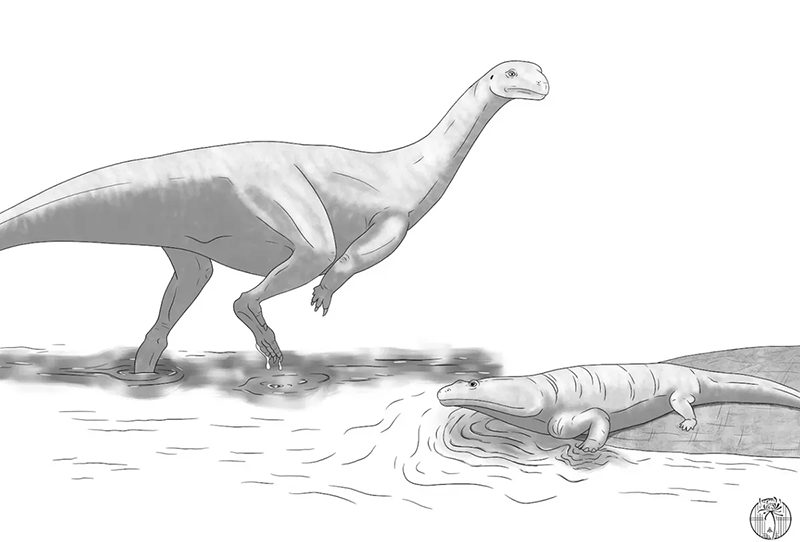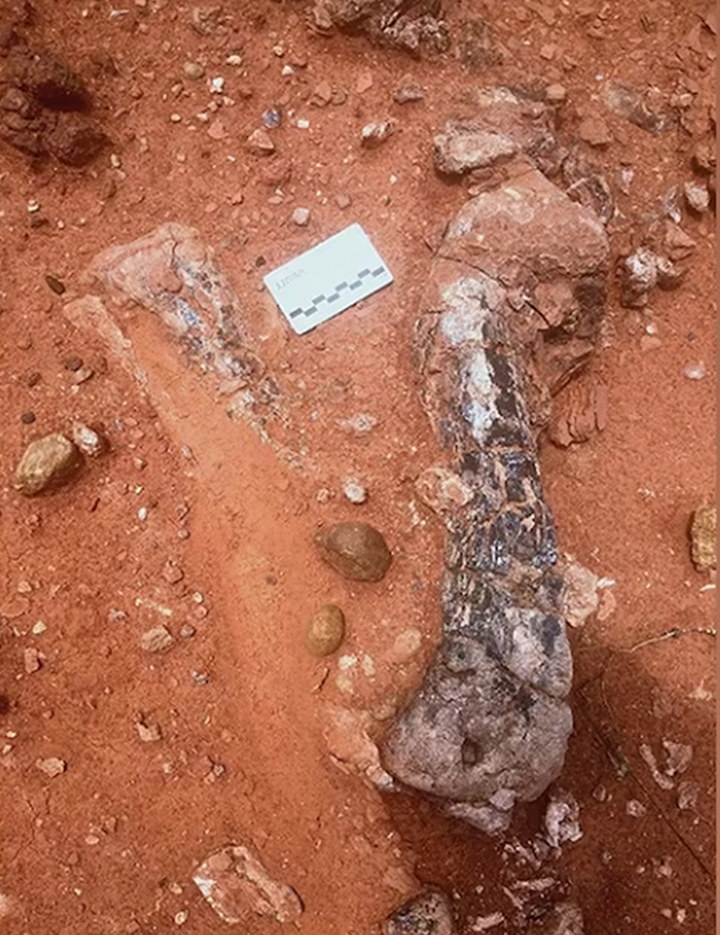- Arts & Culture
- No Comment
Brand-new dinosaur species discovered in Zimbabwe on the shoreline of Lake Kariba

By Agencies
- A team of scientists has unveiled the discovery of a new dinosaur that was previously undiscovered.
- The fossils belong to a dinosaur that was named Musankwa sanyatiensis after the houseboat the researchers lived and worked on during expeditions.
- The discovery ignites hopes that there are more fossils in the region that will help understand how the Triassic period ended.

A remarkable fossil finding in Lake Kariba in Zimbabwe has led to a new dinosaur species being named by researchers: Musankwa sanyatiensis.
The fossilized remains of the species’ single hind leg, including its thigh, shin, and ankle bones were discovered embedded into a rock in the lake’s shoreline, according to a study published in Acta Palaeontologica Polonica on Thursday.
Researchers say the remains date back to the Late Triassic period, approximately 210 million years ago.
After analyzing Musankwa Sanyatiensis, researchers note the new species is among the Sauropodomorpha, a clade of long-necked dinosaurs that lived during the Late Triassic.
“Despite the limited fossil material, these bones possess unique features that distinguish them from those of other dinosaurs living at the same time,” Dr. Kimberley “Kimi” Chapelle, assistant professor at Stony Brook University and an honorary associate at the Evolutionary Studies Institute at Wits said in a press release for the study Thursday.
The discovery of Musankwa Sanyatiensis marks the fourth dinosaur species to be named in Zimbabwe.
Artist reconstruction of Musankwa sanyatiensis, walking in Triassic shallow waters past a metoposaur.
Previous findings from the African nation include Syntarsus rhodesiensis in 1969, Vulcanodon karibaensis in 1972 and Mbiresaurus raathi in 2022, according to the press release.
The study was conducted by researchers from the University of the Witwatersrand (Wits) in South Africa, the Natural History Museum of Zimbabwe, Stony Brook University in New York and was led by professor Paul Barrett from the Natural History Museum in London.
In March 2024, a 70 million-year-old fossil that turned out to be a nearly complete skeleton of a long-necked titanosaur was discovered by a man walking his dog in France.
Damien Boschetto stumbled upon the massive skeleton in the forests of Montouliers, near his home in Cruzy, a village in southern France.
